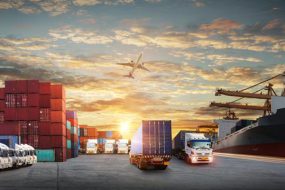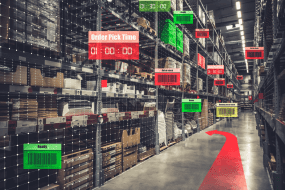

Hazardous substances, from household cleaners to industrial chemicals, are present in our everyday environment. However, transporting these materials safely requires a specialised approach. Unlike ordinary goods, moving chemicals necessitates customised packaging, strict adherence to safety protocols, and careful handling to prevent accidents or environmental damage. For businesses, ensuring these materials reach their destination safely is not just a responsibility; it is essential.
Between 2021 and 2023, the U.S. experienced over 825 hazardous chemical incidents. Tragically, these accidents resulted in 43 deaths and numerous injuries. By prioritising safe packaging and handling practices, businesses can mitigate these risks, comply with safety regulations, and ensure smooth operations.
What does proper packing mean?
In chemical transport, “proper packing” refers to the careful selection of containers, materials, and protective layers designed to handle the specific requirements of hazardous shipments. The various packaging components—including the outer shell, inner padding, and clear warning labels—help prevent leaks, spills, and damage during transit.
Shipping chemicals brings additional risks compared to standard items. Choosing the right packaging is essential for both small orders and bulk shipments. It helps prevent costly mistakes and ensures compliance with crucial safety standards. For businesses, paying close attention to packaging is not just a good practice—it is essential for effective risk management and adherence to regulations.
Why should businesses prioritise proper packing?
Here are four critical reasons why proper packing matters for any company that ships chemicals:
- Regulates shipping costs: Poorly packed chemicals can be rejected or returned and incur penalties. While quality packing may be more expensive, it helps companies avoid unexpected freight costs from non-compliant shipments.
- Reduces delays: Good packing helps ensure shipments arrive on time and keeps freight and logistics processes moving smoothly.
- Meets compliance requirements: Meeting packaging requirements is essential for any business working with chemicals to avoid penalties.
- Protects the environment: Safe packing minimises the risk of spills or leaks that can harm ecosystems, making it an environmentally responsible practice.
The Risks of improper packing
Improper packing creates risks that can escalate quickly. Here are a few of the consequences that businesses face when they don’t prioritise proper packing:
Leaks and exposure
Poorly packed chemicals might spill or leak, which puts workers, transporters, and even the public at risk. Some substances, such as corrosives or flammables, could cause fires or explosions if they leak during transit.
Environmental harm
If chemicals spill, they can severely impact soil, water, and local ecosystems. Chemical clean-up is expensive, and in some cases, the environmental impact can last for years.
Financial and legal issues
Improper packaging often violates industry standards, leading to fines and legal challenges. 36% of hazmat (hazardous materials) violations are caused by improper packaging, costing companies increased insurance premiums or liability claims.
Understanding key regulations for chemical packing
Complying with safety regulations is crucial for safe chemical transportation. Here’s a look at some key organisations and standards that set the rules:
Overview of the regulatory bodies
Several key regulations are in place to ensure the safe handling of hazardous materials across different modes of transport. In the U.S., the Department of Transportation (DOT) establishes rules regarding the secure packaging, labelling, and documentation of dangerous materials. The International Air Transport Association (IATA) provides globally recognised guidelines to prevent in-flight hazards for air freight. The International Maritime Dangerous Goods (IMDG) Code offers a comprehensive framework for safely packing, labelling, and storing chemicals at sea. Together, these standards contribute to a consistent approach to safety in transporting hazardous materials across all transportation methods.
Essentials for safe packing and labelling
- Robust, approved packaging that handles temperature and pressure changes.
- Clear labels that show hazard details and identification numbers.
- Global symbols, such as ISO codes, and guide safe handling.
- Unique Formula Identifier (UFI) codes to help poison centres identify products in emergencies.
Best practices for safe packing in chemical transportation
How can businesses ensure they are following safe chemical transportation practices? Here are some of the top recommendations:
Choose the right packaging materials
The first crucial step in safely transporting chemicals is selecting the appropriate packaging. Businesses must evaluate the nature of their goods and ensure that containers can withstand transport conditions and are chemically compatible with their contents. Proper packaging materials are essential for preventing leaks, maintaining product integrity, and meeting regulatory standards, ultimately safeguarding both the product and those handling it.
Use spill containment measures
Next, choose a secondary containment measure—such as spill trays or absorbent liners. This provides an extra layer of security, keeping any leaks contained and preventing spills from spreading.
Label everything correctly
Finally, it is essential to use the appropriate hazard symbols, identification numbers, and safety labels. This documentation helps everyone understand the risks and what to do in an emergency.
Related article: 10 Latest Refinery Technologies Improving Safety and Efficiency
Training and awareness
Ensuring employees are well-trained in handling hazardous materials and understanding label requirements is essential for safety and compliance. Proper training reduces the risk of spills, leaks, and other incidents while keeping operations aligned with regulatory standards.
Key takeaway
Proper packing for chemical transportation is essential for any business dealing with hazardous materials. By adhering to best practices and meeting regulatory requirements, companies can ensure safe transit, reduce operational risks, and contribute to environmental preservation.
Combining safe packing with smart cost management makes chemical transportation efficient and secure.
Contact Aramex today for secure freight solutions for the transport of dangerous goods.




